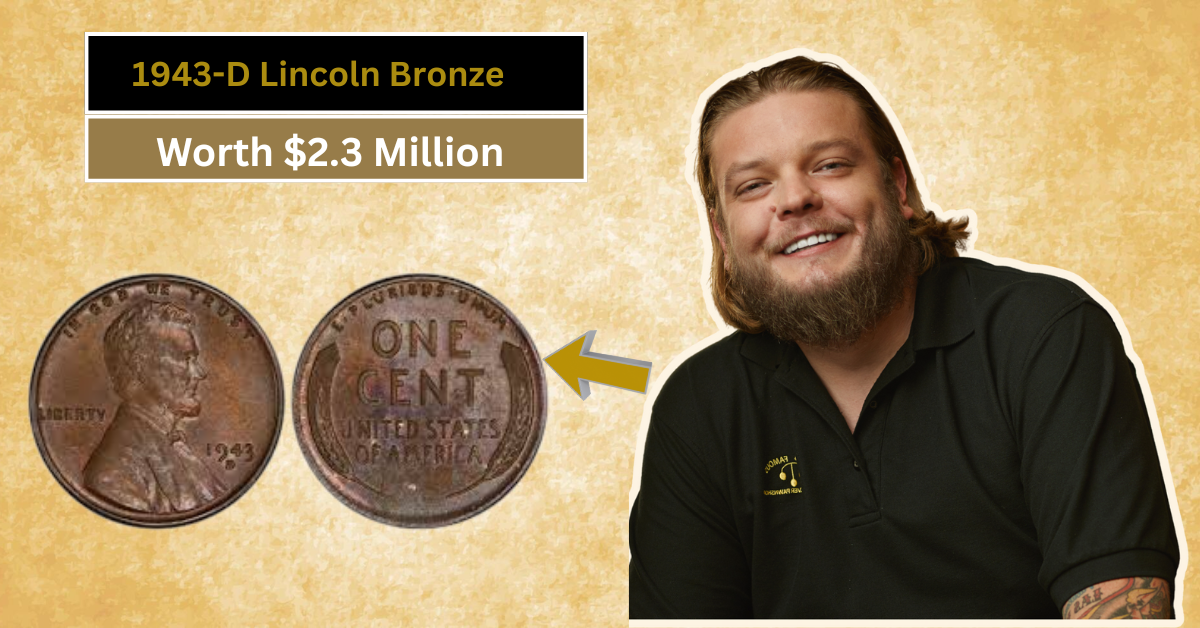The 1943-D Lincoln Bronze Wheat Penny is one of the most famous and rare coins in the world. What makes this penny so special is that it was made by mistake during World War II. While most pennies in 1943 were made from steel to save copper for the war, a few were accidentally struck on bronze planchets leftover from the previous year. This simple error turned a common coin into a priceless treasure.
Today, collectors around the world value this penny at millions of dollars. But how did this wartime mistake happen, and why is it so important? In this article, we will explore the fascinating story of the 1943-D Lincoln Bronze Wheat Penny, its unique characteristics, and why it continues to excite coin lovers and historians alike.
The Background: Why Pennies Changed in 1943
During World War II, copper was a valuable metal used primarily for ammunition and military equipment. To save copper, the US Mint decided to change the metal composition of pennies in 1943. Instead of copper, pennies were made from zinc-coated steel, which gave them a shiny silver color. This change was necessary to support the war effort by conserving copper for important uses.
Normally, pennies before 1943 were made from bronze, an alloy mostly consisting of copper. So, the switch to steel pennies was a big change for the public. People were used to the reddish-brown color of the old pennies, but suddenly the coins looked silver and were more prone to rusting. Despite these issues, steel pennies became the standard for 1943, and millions were minted that year.
What Makes the 1943-D Bronze Penny Special?
The 1943-D Lincoln Bronze Wheat Penny stands out because it was made from bronze instead of steel. The “D” on the coin refers to the Denver Mint where it was produced. Since all 1943 pennies were supposed to be steel, the bronze ones were a huge mistake. Only a small number of these bronze pennies were made accidentally, likely due to leftover bronze planchets being used in the Denver Mint.
Because so few of these pennies exist, they are extremely rare. Experts believe there are fewer than 20 known examples. This rarity makes the coin highly sought after by collectors, driving its value to incredible heights. Unlike regular pennies, the 1943-D bronze penny is a symbol of a historical error that turned into a valuable collector’s item.
How Much Is the 1943-D Lincoln Bronze Penny Worth?
In recent auctions, a 1943-D Lincoln Bronze Wheat Penny sold for over $2.3 million, making it one of the most expensive pennies ever sold. This price is much higher than regular 1943 steel pennies, which are worth only a few cents to a few dollars. The rarity and historical importance of the bronze penny make it exceptionally valuable.
Collectors are willing to pay millions because this coin is a rare piece of American history and a symbol of the unusual challenges faced during wartime. Owning such a coin is like holding a piece of a fascinating story, one that combines mistakes, politics, and economics all in one small object.
How to Identify a 1943-D Bronze Penny
If you find an old penny from 1943, it is important to know how to tell if it is a rare bronze version or just a regular steel penny. The easiest way to spot the difference is the color. Bronze pennies have a coppery, brown color similar to earlier pennies, while steel pennies are silver-gray.
However, some fake bronze pennies have been made using copper-plated steel coins. To be sure, experts recommend checking the coin’s weight and metal composition using special tools. The bronze penny weighs about 3.11 grams, while the steel variety weighs less due to their different materials.
If you believe you have found a 1943-D bronze penny, it is best to consult a professional coin appraiser. They can verify the authenticity of the coin and provide accurate information on its value.
The History Behind the Mistake
The error that created the 1943-D bronze penny happened during a time of great pressure at the US Mint. With the war demanding changes in coin production, the Mint had to quickly adapt to the new steel penny planchets. However, not all the old bronze blanks were removed before production began at the Denver Mint, leading to the accidental creation of bronze pennies in 1943.
This mistake was not repeated elsewhere because the Philadelphia and San Francisco Mints handled this change more carefully. The Denver Mint’s bronze pennies remained a mystery for decades and only surfaced later as collectors discovered their extreme rarity and significance.
Why the 1943-D Bronze Penny Matters Today
The 1943-D bronze penny is more than just a coin; it is a reminder of how even small errors can create something extraordinary. This coin captures a moment in history when the world was battling war and resources were tight. It shows how the US made quick decisions to support the war effort and how those decisions affected everyday items like currency.
For younger readers and collectors, this penny represents an inspiring story of history, economics, and human error coming together. It is a perfect example of why looking closely at history’s small details can reveal fascinating stories that connect us to the past.
Conclusion
The 1943-D Lincoln Bronze Wheat Penny is a rare and valuable coin born out of a wartime mistake. Despite the efforts to conserve copper during World War II, a few bronze pennies slipped through the system and became historic treasures. Today, these pennies are treasured by collectors worldwide for their unique story and incredible rarity.
If you ever come across an old penny from 1943, take a moment to check it carefully. You might just be holding a piece of history worth millions. The 1943-D bronze penny reminds us how even small errors can leave big marks on history.




